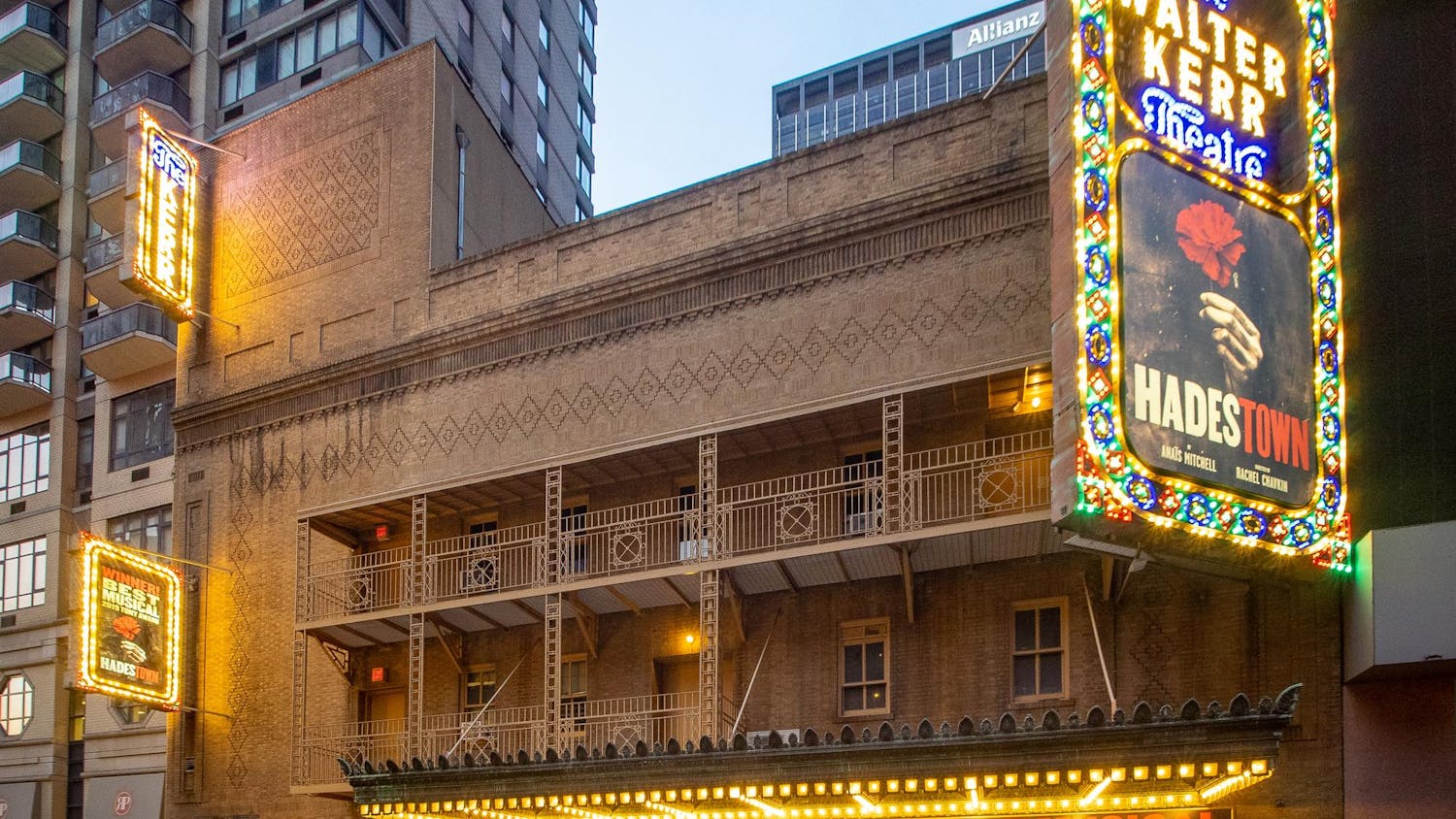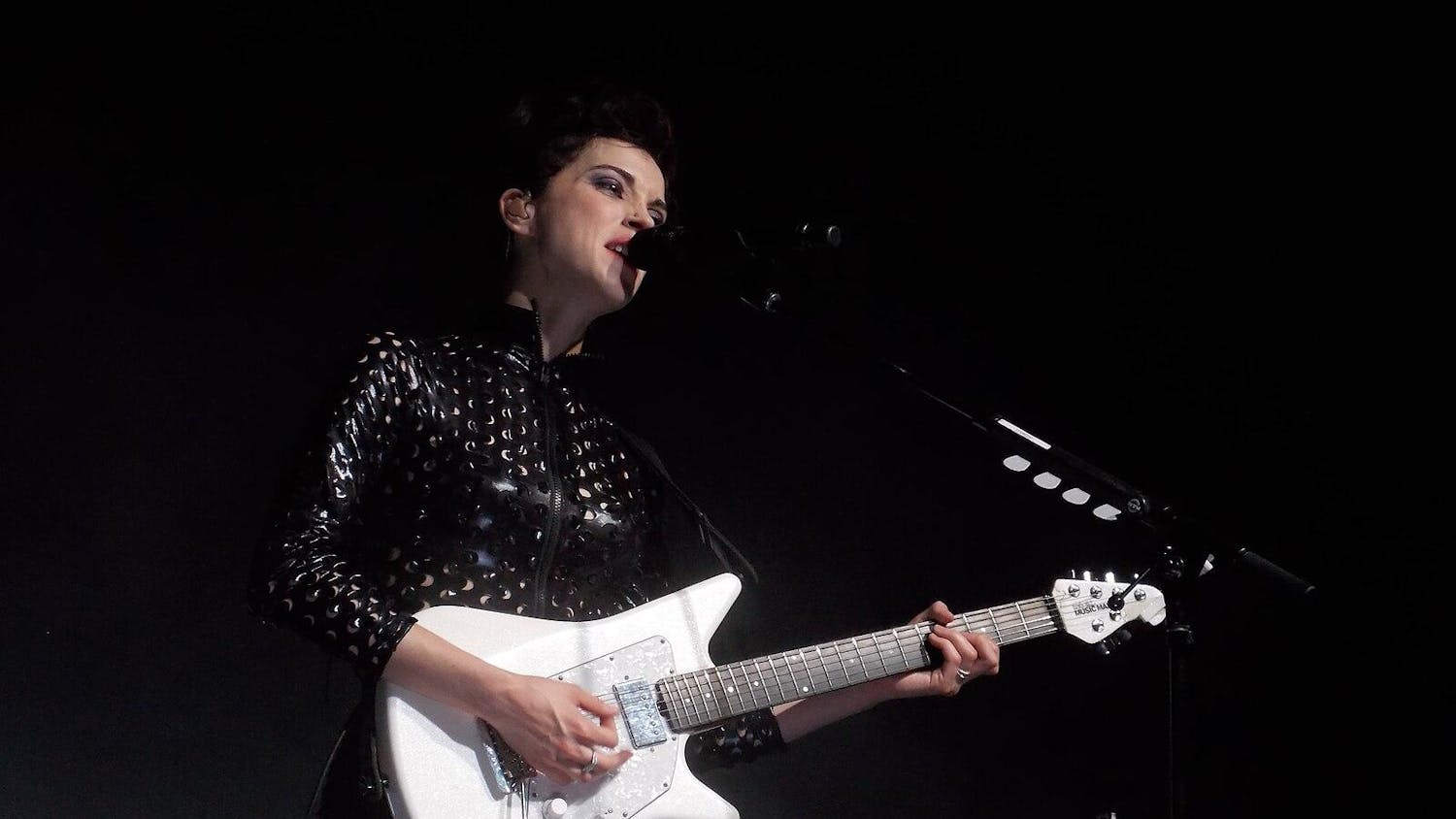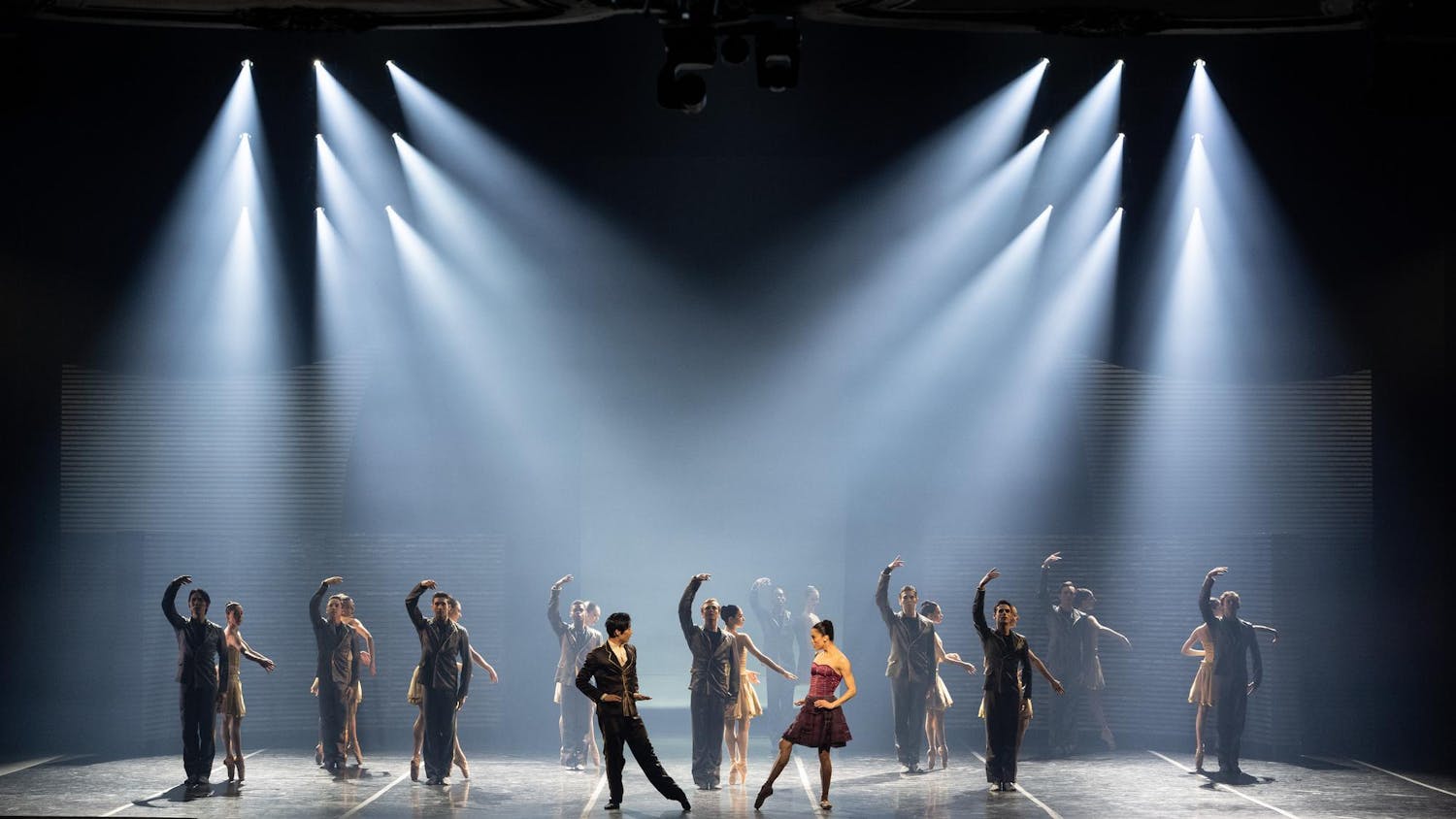Malen's exhibition, "I am the Animal," is not dominated by a moralizing tone; rather, her work examines the way humans have distinguished themselves from animals in an effort to destabilize this human-animal hierarchy. This destabilization allows Malen to suggest that humanity search for some of its solutions by examining some of its earthly cohabiters.
The single-room exhibition "I am the Animal" immerses the viewer in Malen's vision and exploration of an insectoid alternative to the human lifestyle: the bees and their colony. Malen examines the utopian life of the bee by exploring the alternative offered by a social structure where many individuals exist and function as part of a coherent whole. However, the interest in Malen's work lies not in her exploration of the bee model itself, but in her questioning of why humanity cannot or will not take on a similar model.
A large screen divided into three portions fills one side of the gallery space; at center are a number of stools where viewers are invited to sit. Another two walls are taken up by a series of large photographs titled "Stills from the dance language of the bees" (2010). Malen's exhibit seeks to force the viewer into the fragmented visual world of the bee. Her immersive experience is a type of ‘reverse anthropomorphization': she attempts to insert the viewer into the perspective of the bee, which encourages a reexamination and reconsideration of the human world.
The main focus of the exhibit is Malen's video installation, "I am the Animal." The video is not a traditional narrative film but is composed of various small thoughts or snapshots of film: various memes are projected onto the screen in groups, which then fade out and are replaced by another set of videos. This, mimics a sort of fragmented "bee-vision" and allows for a number of different ideas to be loosely associated without being reified into a single strain.
This free-association method is well suited to the subject matter of the video, which presents bees' colonies as a sort of idealized way of living before devolving into images which create analogies between animal and human perspectives. The video concludes with a number of quotations that suggest the superiority of the animals' lifestyle, juxtaposed with quotations which suggest humanity's abuse of animals.
While Malen provides the beehive and the animal kingdom as one societal model, she also acknowledges that humanity's self-positioning as superior to animals (and indeed the natural world at large) is a prohibitive attitude that has already had disastrous consequences.
The idea of humanity's transformation into a bee-like utopia is further complicated by the series of stills displayed in the gallery. The large images are divided into groups of four photographs: some featuring close-up portraits of men or women in bee-costume, some featuring groups of costumed men and women interacting. The despondent look on the faces of the men and women in the portraits suggests the futile nature of Malen's vision.
Malen's analysis of human-animal relations is not solely negative; a short documentary on a group of beekeepers entitled,"Beekeepers' Tales" (2010), also on display in the gallery, draws attention to the positive interactions that take place between bees and humans. Interviews with various beekeepers present a picture that grasps at the utopia Malen presents through the bees: a peaceful cohabitation instead of predatory opposition.
Lenore Malen's exhibition creates a complex portrait of human and animal relations. But by seeking to immerse the viewer in a transformative experience and place them in the position of the bee, Malen motions toward the first step in an improved lifestyle for humanity — the dissolution of the man's artificially constructed divide between human and animal.
By drawing attention to the similarities between human and animal, and to the constructed and absolute nature of the idea of "human" versus "animal," Malen suggests that a more impartial attitude could help us reach a better lifestyle.





